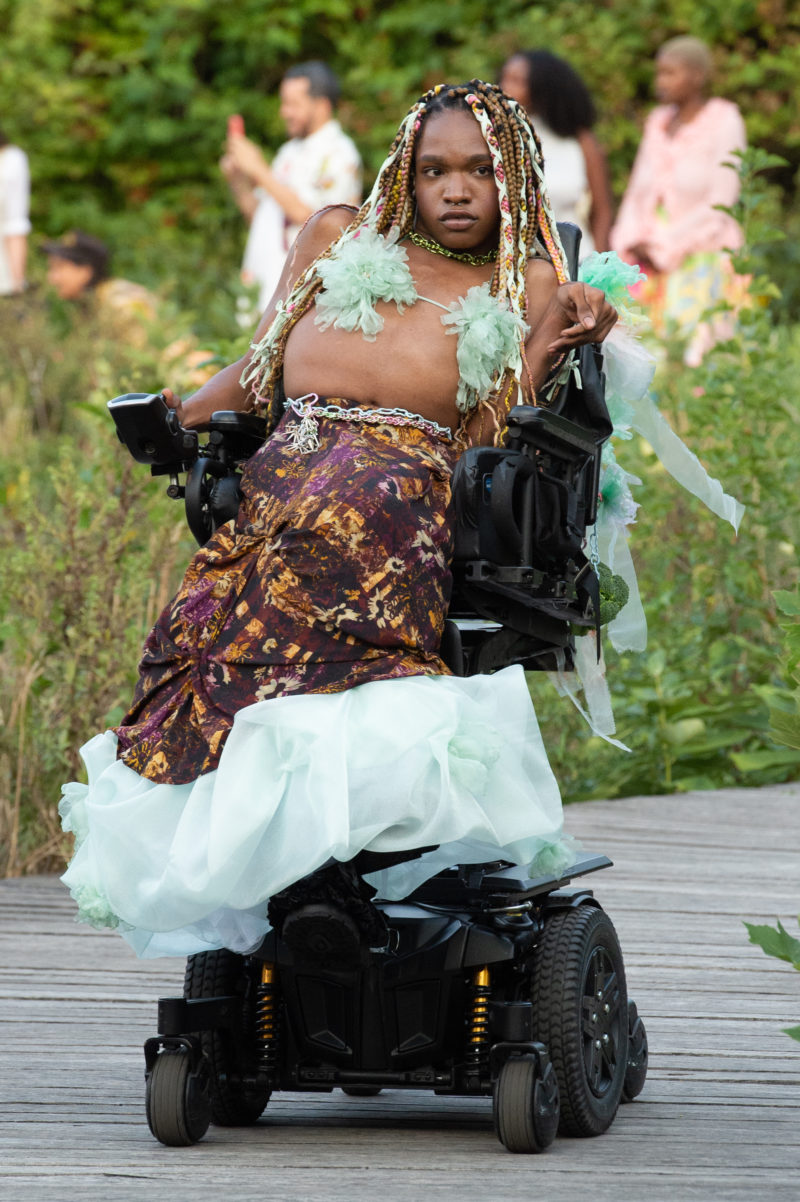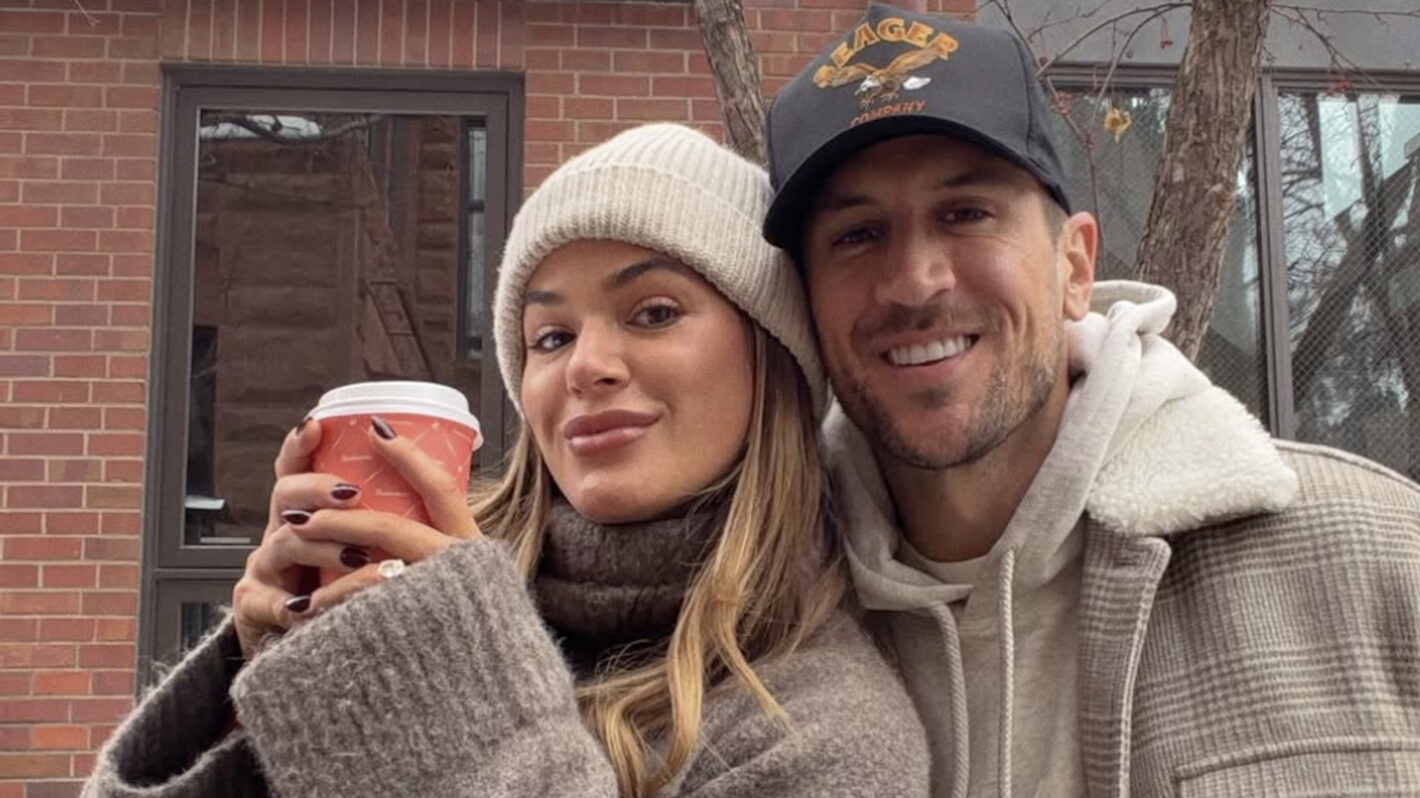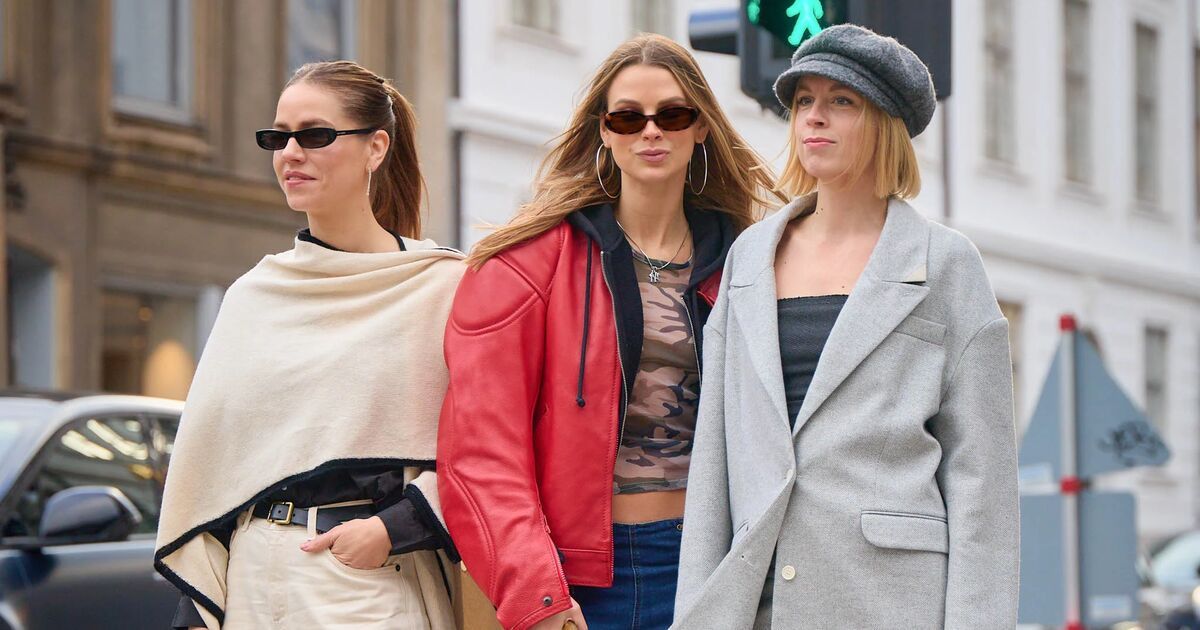
Photo by Yuchen Liao/Getty Images for NYFW: The Shows
“We deserve more space on and off the runway.”
Date September 16, 2022
The fashion industry has a tendency to preemptively pat itself on the back. But whether it’s performative body inclusivity or greenwashing, brands aren’t always as progressive as they seem. And for people with disabilities, fashion is overtly ableist and exclusionary. Look no further than New York Fashion Week.
This year, over one hundred brands showcased their designs at locations across the city. And amid the days-long fashion frenzy, there was an increased sense of accessibility. Labels like Collina Strada, Studio 189, Foo And Foo, Guvanch and Hester Sunshine sent models in wheelchairs down their runways. Not to mention, the non-profit organization Open Style Lab produced a first-of-its-kind show dedicated to disabled models.
In an industry known for exclusion, these standout points of representation are worth celebrating. But at the same time, they draw attention to the fact that New York Fashion Week—and the industry as a whole—is still overwhelmingly ableist.
“This season, I saw more brands put more visibly disabled models on their runways than ever before,” says Bri Scalesse, a model and disability advocate who wheeled at Studio 189 and Guvanch. “But with one in four [Americans] being disabled, we are still massively underrepresented on the runways, and the audience spaces are still mostly inaccessible.”
That’s because, in order to even attend a fashion show, there are often baseline physical requirements. It’s not uncommon for guests to wade through packed crowds, walk up flights of stairs or traverse narrow corridors. Seating arrangements are not exactly disability-friendly either, with many presentations requiring attendees to gather on bleachers or squeeze together in standing masses.
“Disability is an integral, beautiful, meaningful, massive part of humanity,” says Scalesse. “Inaccessibility is just not acceptable with the resources we have in 2022.” Despite that, these ableist conditions are still the norm. But that should come as no surprise.
For so long, fashion has ignored people with disabilities. Even simple vocabulary terms like “catwalk” and “runway” imply that you need to be able-bodied to be a model. And shows often rely on this type of physicality. Take designer Victor Glemaud, who opened his New York Fashion Week show with roller skaters playfully parading down the runway. “Glemaud makes clothes you can truly move in,” Vogue said of the show. But what if your body can’t move in that way?
It’s not that brands shouldn’t incorporate performance aspects into their presentations. But it should be standard practice for designers to showcase people of all abilities at their shows. And right now, that’s just not the case.
For those who aren’t able-bodied, physically entering a venue can be half the battle. When attending a fashion show, there are multiple accessibility aspects disabled people have to think about, Scalesse explains. Can they enter through the door and move around the space? Can they get on the runway? Can they use the bathroom? “And can we do all of this without someone having to take us through a back entrance; a garbage disposal entrance; a lift we cannot operate on our own?” she adds. According to her, more often than not, the answer to at least half of these questions is no.
“I think this majorly discourages designers from using disabled models in an industry that already uses so few disabled models,” she continues. In turn, this lack of representation perpetuates the idea that the garments on display are made for the able-bodied people wearing them and no one else. But truly innovative clothing can be both functional and fun.
Enter Open Style Lab. The organization’s show presented an entire collection of adaptive fashion—a.k.a. non-restrictive designs made for people with disabilities. Whether it’s user-friendly fasteners, inclusive size ranges or garments that work with artificial limbs, the mindful sartorial approach pushes back on fashion’s longstanding one-size-fits-all ideology. Beyond that, it supports the idea that clothes should be adapted to fit the wearer and not the other way around.
More and more, disability and fashion are intersecting. Style icons such as Selma Blair have shown that changing health conditions don’t have to limit sartorial statements, and highly-coveted labels like Collina Strada have made wheelchair-using models a staple of their runway shows. While these landmarks of representation show the progress we’ve made, they also remind us of how far we have to go. Ultimately, the pervasive lack of accessibility in high-fashion spaces forces us to reckon with tough questions. Like, who does this industry really belong to? And why should it belong to anyone at all?
At Fashion Week, Bri Scalesse wants to see things change for disabled people. “We have been, as a whole, largely excluded from fashion for too long,” she says. “We are some of the most creative, adaptive people, and we deserve more space on and off the runway.”





























